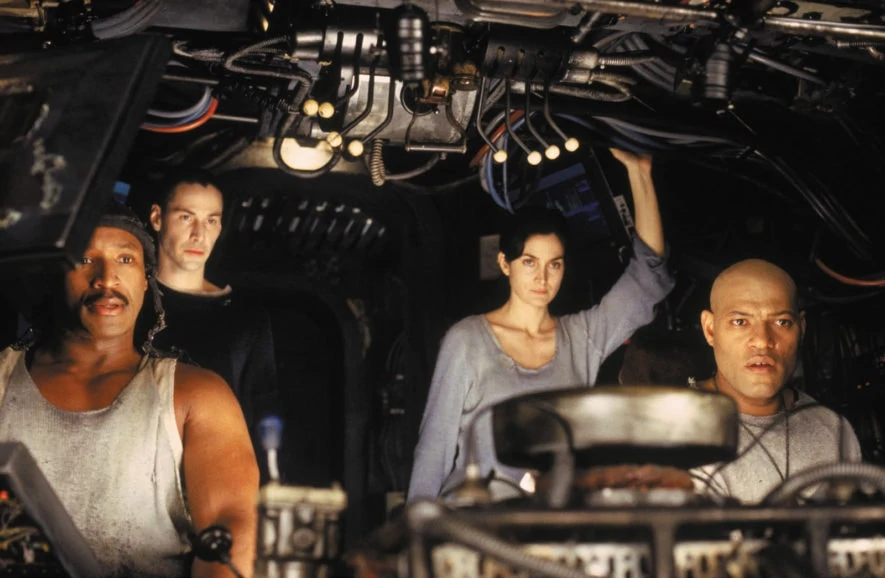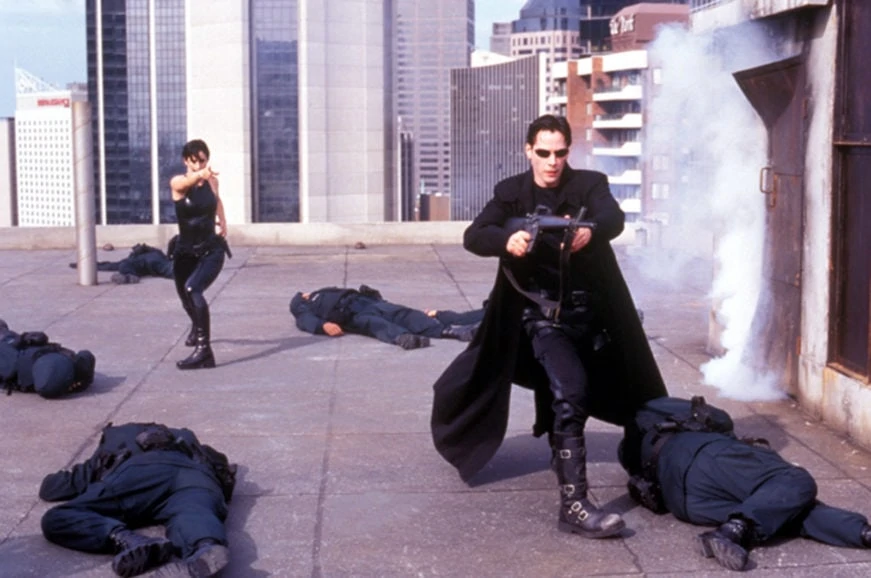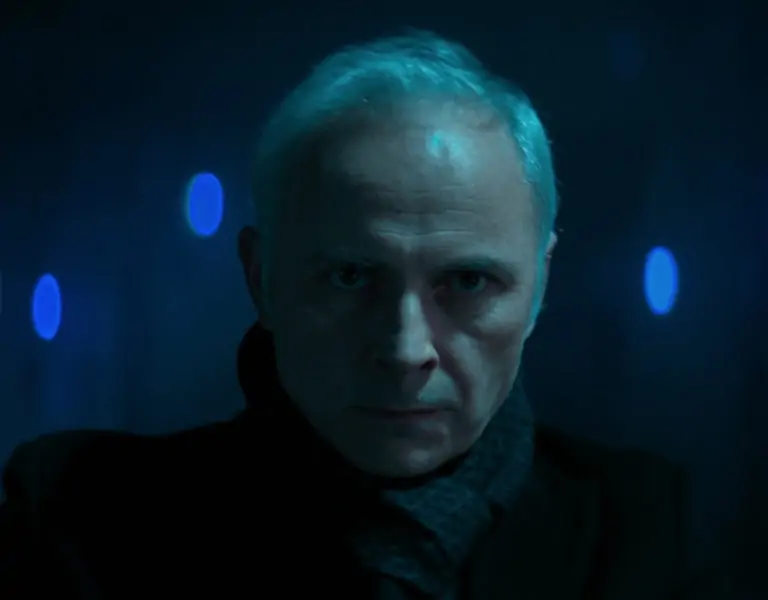THE MAN WHO SHOT BULLET TIME
DP Bill Pope ASC has a long, varied career starting in the 1980s, and travelling through some of Hollywood’s biggest blockbusters. But his movie career started with a pioneer of the action sci-fi genre, known for its innovative effects and high-concept narrative: The Matrix.
Bill Pope ASC’s path into production was far from direct. A DP with mostly music video credits, Pope’s resume was somewhat lacking high-profile motion pictures in the 1990s. But a dose of good fortune (and low rates) eventually led him to the debut film of the Wachowski siblings.
Bound, a modern noir starring Joe Pantoliano and Jennifer Tilly, had begun production with another DP, who lasted only a day after finding the $1 million budget far too restrictive.

“Fortunately for me, his agent was my agent. So, they went back to our agent and said ‘who’s at the other end of the ladder? Who’s the bottom DP, the cheapest guy?’ and that was me. So next thing I knew, I was there.”
While shooting Bound, the initial idea of The Matrix was shared with Pope, years before it would be close to becoming a reality. “By the time I got the script, I understood the story. We’d all been watching mainland and Hong Kong movies and Japanese anime by that point for years, and we’d see something that we really loved, something really cool, and they’d go, ‘Hmm’. So, I already knew what was in the script because I saw them think of it.”
The first challenge for Pope to overcome was creating an obvious, visual split between the real world and the world within The Matrix.
“The computer-made world was to have a slightly “wrong” and ominous tint based on the colour of cursors at the time. The real world had no sunlight, and so yellow was missing, replaced by a slight cold blue.”
Before the production started in earnest it had already gone through a fair share of leading men. Some had walked away due to the delays in getting production off the ground, others because they didn’t buy into the concept.

“We started preproduction a couple of times; both were because one of the earlier Neos had signed on. These include Johnny Depp, Val Kilmer, and Will Smith. I was involved in all those efforts over the course of two years.”
“Imagining it was the hard part. But the actual execution of it was really quite simple.”
Bill Pope ASC
But once Keanu Reeves was confirmed, the production could start in earnest. Costs were limited, even with a bankable A-list start, which meant the revolutionary bullet time effects would need some forethought, ingenuity and more than a fair share of luck. A key hire was John Gaeta who, in spite of his youth, was brought on board as special effects supervisor because he could make the bullet time effect a reality.
“We knew that we had to have a rig and a path for a camera to follow. It was John Gaeta who made the simple observation that a motion picture camera is just a bunch of still images stuck together. And he could break them down into as many still images, then morph between them.”

Although the theory was sound, the limited budget meant some corners still had to be cut. “So, we designed one path of the camera around Neo, leaning over to let the bullets go by, and another path of the camera where Neo and Agent Smith jumped up and put their guns against each other’s heads in an homage to John Woo. And if you look at them, they’re exactly the same path the camera takes because we could only afford one rig.”
The effects shots required 300fps, meaning fluorescent bulbs were used throughout the shoot. In case Bullet Time didn’t work, and for other last-minute shots in slow motion, the Wachowskis had another request: “Each set was lit to allow for 300fps. So, all the practical lights, including fake streetlights and fluorescents, had to be manufactured out of Pyrex. Sets had to be fireproofed. And yet it all had to look super casual. It was a giant engineering effort by the art and lighting departments.”
And, of course, the almost 360-degree camera movement meant lighting had to cover all the bases. This led to every light being configured for f/16 so, in Pope’s own words, it was “cluttered as hell in there.”
The restrictions of the visual effects also influenced the choice of lenses, as Pope had to rely on spherical lenses rather than anamorphic. “I would have shot it on anamorphic lenses, but digital was in such early stages that it was not possible to map the lenses, and all their aberrations, onto the image. So that’s my regret when I [went to] watch those movies. I shot on spherical lenses and cropped. The quality could have been a lot better and much more fun with real anamorphic lenses.”

Even though the inexperience of the creative team may have been apparent, their passion for the martial arts film genre led them to a serious coup: director and stunt co-ordinator Woo-Ping Yuen.
“We noticed that [we were watching] half of the movies that we really loved were directed and [the stunts were] choreographed by Woo-Ping Yuen, so the Wachowskis asked him [in] to do the choreography for our movie. It was a big honour for us, and a big chance for him to do a Western movie. And he’s the master. He’s literally referred to as the Master by his team.”

The headline-grabbing computer-led effects did draw attention away from some of the more spectacular practical effects, though. “I get the most pleasure out of thinking of the film as mainly practical, shot with practical solutions, and having well-chosen, very selective CG enhancement. For instance, when Trinity runs into a phone booth as Agent Smith drives a massive truck at her to crush her. We put the sidewalk, phone booth and camera on a huge dolly and drove it at the stationary truck. That way we could take her right up to the bumper and still be safe. No CG at all.”
The popularity, and legacy, of the film came as a shock to many people, Pope included. “Did we imagine that many people would enjoy a sci-fi, Kung fu movie, with western stars performing martial arts in a plot that no studio could understand? No.”
The Matrix is available now on 4K, Blu-ray and DVD.


















